| [1]Cajal RY, DeFelipe J, Jones EG. Regeneration and regeneration of the nervous system (translated by May RM). New York, Oxford: Oxford University Press,1991.[2]Millesi H. Brachial plexus injuries. Nerve grafting. Clin Orthop Relat Res. 1988;(237):36-42. [3]Rühmann O, Schmolke S, Bohnsack M, et al. Reconstructive operations for the upper limb after brachial plexus palsy. Am J Orthop (Belle Mead NJ). 2004;33(7):351-362.[4]张泽华,阮怀珍.基因治疗在周围神经损伤修复中的应用[J].创伤外科杂志,2002,4(6):377-380.[5]Verdú E, Ceballos D, Vilches JJ, et al. Influence of aging on peripheral nerve function and regeneration. J Peripher Nerv Syst. 2000;5(4):191-208.[6]Stoll G, Jung S, Jander S, et al. Tumor necrosis factor-alpha in immune-mediated demyelination and Wallerian degeneration of the rat peripheral nervous system. J Neuroimmunol. 1993; 45(1-2):175-182.[7]Taskinen HS, Röyttä M. The dynamics of macrophage recruitment after nerve transection. Acta Neuropathol. 1997; 93(3):252-259. [8]Perry VH, Brown MC, Gordon S. The macrophage response to central and peripheral nerve injury. A possible role for macrophages in regeneration. J Exp Med. 1987;165(4):1218-1223.[9]Beuche W, Friede RL. The role of non-resident cells in Wallerian degeneration. J Neurocytol. 1984;13(5):767-796.[10]Griffin JW, George R, Lobato C, et al. Macrophage responses and myelin clearance during Wallerian degeneration: relevance to immune-mediated demyelination. J Neuroimmunol. 1992;40(2-3):153-165.[11]Sunderland S. Nerve and nerve injury.New York: Churchill Livingston,1987:173-176.[12]Lundborg G, Dahlin LB, Danielsen N, et al. Nerve regeneration in silicone chambers: influence of gap length and of distal stump components. Exp Neurol. 1982;76(2):361-375.[13]Danforth D, Hull RW. The microscopic anatomy of the fetal membranes with particular reference to the detailed structure of the amnion. Am J Obstet Gynecol. 1958;75(3):536-550.[14]Bourne GL. The microscopic anatomy of the human amnion and chorion. Am J Obstet Gynecol. 1960;79:1070-1073.[15]Miki T, Strom SC. Amnion-derived pluripotent/multipotent stem cells. Stem Cell Rev. 2006;2(2):133-142.[16]Dluzen DE, McDermott JL, Anderson LI, et al. Age-related changes in nigrostriatal dopaminergic function are accentuated in +/- brain-derived neurotrophic factor mice. Neuroscience. 2004;128(1):201-208.[17]Akle CA, Adinolfi M, Welsh KI, et al. Immunogenicity of human amniotic epithelial cells after transplantation into volunteers. Lancet. 1981;2(8254):1003-1005.[18]Adinolfi M, Akle CA, McColl I, et al. Expression of HLA antigens, beta 2-microglobulin and enzymes by human amniotic epithelial cells. Nature. 1982;295(5847):325-327.[19]Sakuragawa N, Enosawa S, Ishii T, et al. Human amniotic epithelial cells are promising transgene carriers for allogeneic cell transplantation into liver. J Hum Genet. 2000;45(3): 171-176.[20]Houlihan JM, Biro PA, Harper HM, et al. The human amnion is a site of MHC class Ib expression: evidence for the expression of HLA-E and HLA-G. J Immunol. 1995;154(11): 5665-5674.[21]Hunt JS, Wood GW. Interferon-gamma induces class I HLA and beta 2-microglobulin expression by human amnion cells. J Immunol. 1986;136(2):364-367.[22]李沫.预防大鼠坐骨神经修复中瘢痕黏连及促进神经再生的作用研究[D].西安:第四军医大学,2012.[23]Dahlin LB, Lundborg G. Use of tubes in peripheral nerve repair. Neurosurg Clin N Am. 2001;12(2):341-352.[24]Johnson EO, Soucacos PN. Nerve repair: experimental and clinical evaluation of biodegradable artificial nerve guides. Injury. 2008;39 Suppl 3:S30-36.[25]宋永周,郭威,崔慧先,等.人羊膜在神经组织工程中的应用进展[J].生物医学工程研究,2007,26(4):375-378.[26]詹球,王磊,童亚林,等.京尼平交联冻存人羊膜对大鼠损伤神经修复及预防粘连的作用[J].华南国防医学杂志,2013,27(4): 234-237.[27]范伟杰,杨志明,邓力,等.羊膜的基础和临床应用研究进展[J].中国修复重建外科杂志,2006,20(1):65-68.[28]Kamiya K, Wang M, Uchida S, et al. Topical application of culture supernatant from human amniotic epithelial cells suppresses inflammatory reactions in cornea. Exp Eye Res. 2005;80(5):671-679.[29]Solomon A, Rosenblatt M, Monroy D, et al. Suppression of interleukin 1alpha and interleukin 1beta in human limbal epithelial cells cultured on the amniotic membrane stromal matrix. Br J Ophthalmol. 2001;85(4):444-449.[30]刘礼.金异体生物羊膜修复周围神经损伤的实验研究[D]. 南昌:南昌大学,2010.[31]张殿英,姜保国,傅忠国,等.周围神经损伤后 S-100 蛋白的分布和变化研究[J].中国矫形外科杂志,2002,9(4):348-351. |
.jpg)












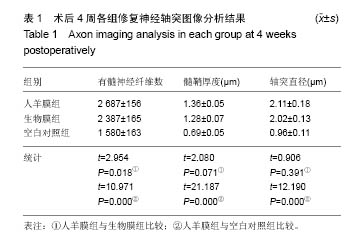
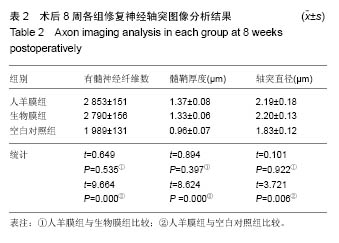
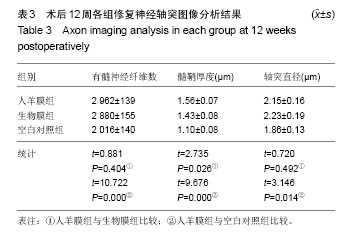
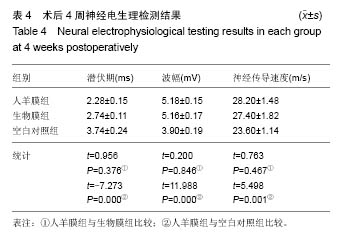
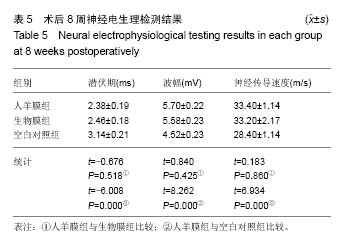
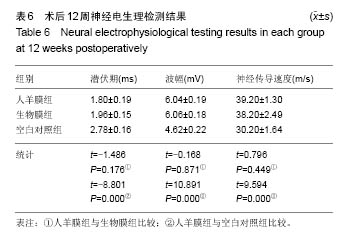
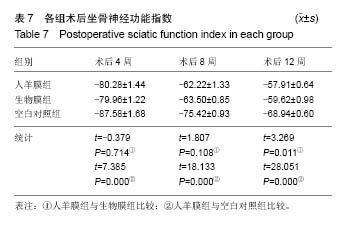
.jpg)